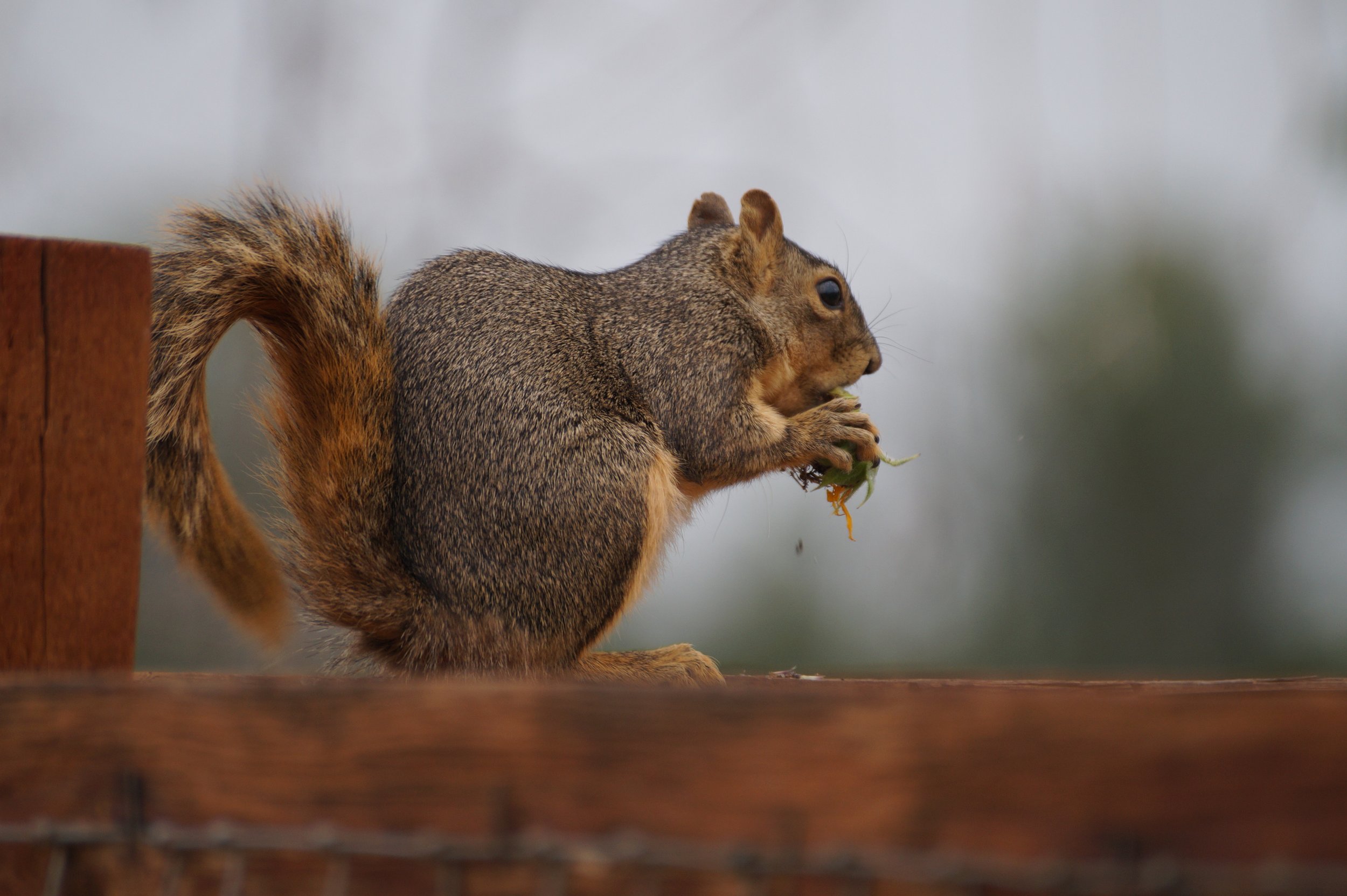Mountain lions are native to this area and will feast on both small and large game in the Cañon. They use their keen eyesight and excellent hearing to stealthily sneak up on prey. Stay on trails and make noise to avoid sneaking up on a mountain lion or its potential prey. Packing your trash out of the Cañon will keep the animals from lingering in the area. Also, know the signs mountain lions leave behind to detect when they may be nearby.
Squirrels
These little friends can be seen year-round, searching for nuts, seeds, and acorns. Though tempting, resist the urge to feed squirrels or other wildlife for the health of the animal and your own safety.
Black Bear
Black bears are frequent visitors in and around the park. Please make sure if you pack your food in that you pack it out, or use the Bear-Safe trash bins labeled REFUSE. The bears will stay healthy and picnickers will stay safe. Click here for what to do if you see a bear.
Mule Deer
Mule deer frequently linger on trails and along roadsides during quieter times of the day. A Mule deer’s finely-tuned sense of hearing help it to detect danger.
Hummingbirds
Fantastic Audubon Society Overview: https://www.audubon.org/field-guide/bird/broad-tailed-hummingbird
The metallic wing-trill of the male Broad-tailed Hummingbird is a characteristic sound of summer in the mountain west. This sound is often heard as a flying bird zings past unseen. The birds are seen easily enough, however, at masses of flowers in the high meadows, where they hover and dart around the blossoms, often fighting and chasing each other away from choice patches.
Broad-tailed Hummingbird
Broad-tailed Hummingbirds breed in high-elevation meadows, shrubby habitats near pine-oak and evergreen forests, and forest openings within pinyon-juniper, oak woodlands, and evergreen forests in the western United States.
Male defends territory by perching high, scanning for and then chasing intruders. In courtship display, male repeatedly climbs high in the air (up to 60 feet) and then dives, with a loud wing-trill. Nest site is in a tree, on a near-horizontal twig or branch, typically sheltered from above by an overhanging branch. Usually 4-20 feet above the ground, sometimes higher. Nest (built by female) is a neatly constructed cup of spider and plant down, with the outer edge covered with lichen, moss, bits of bark.






